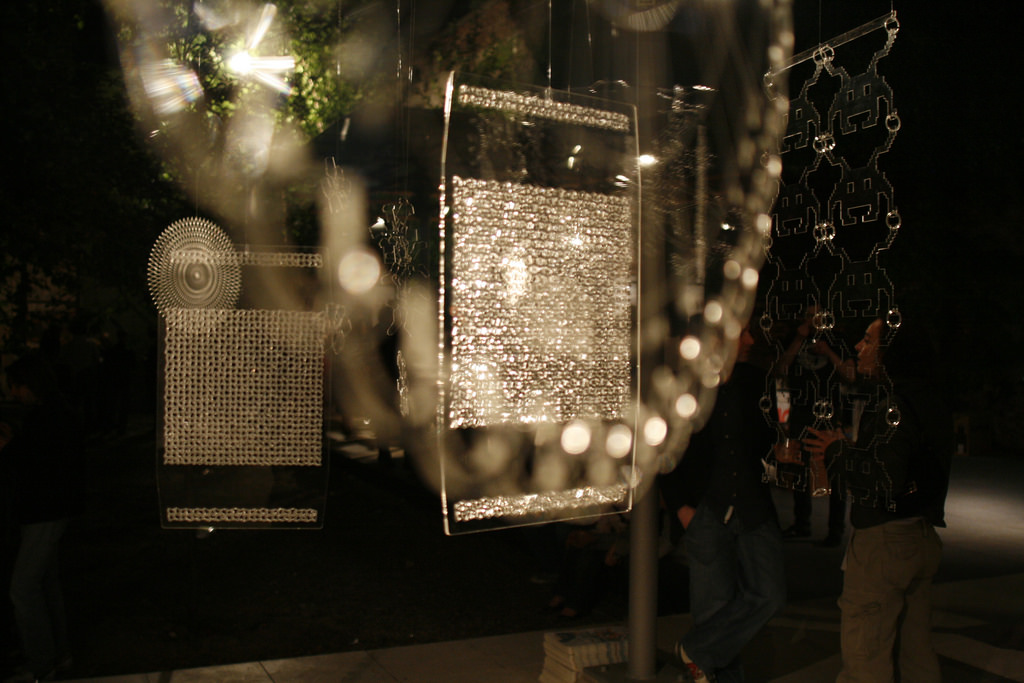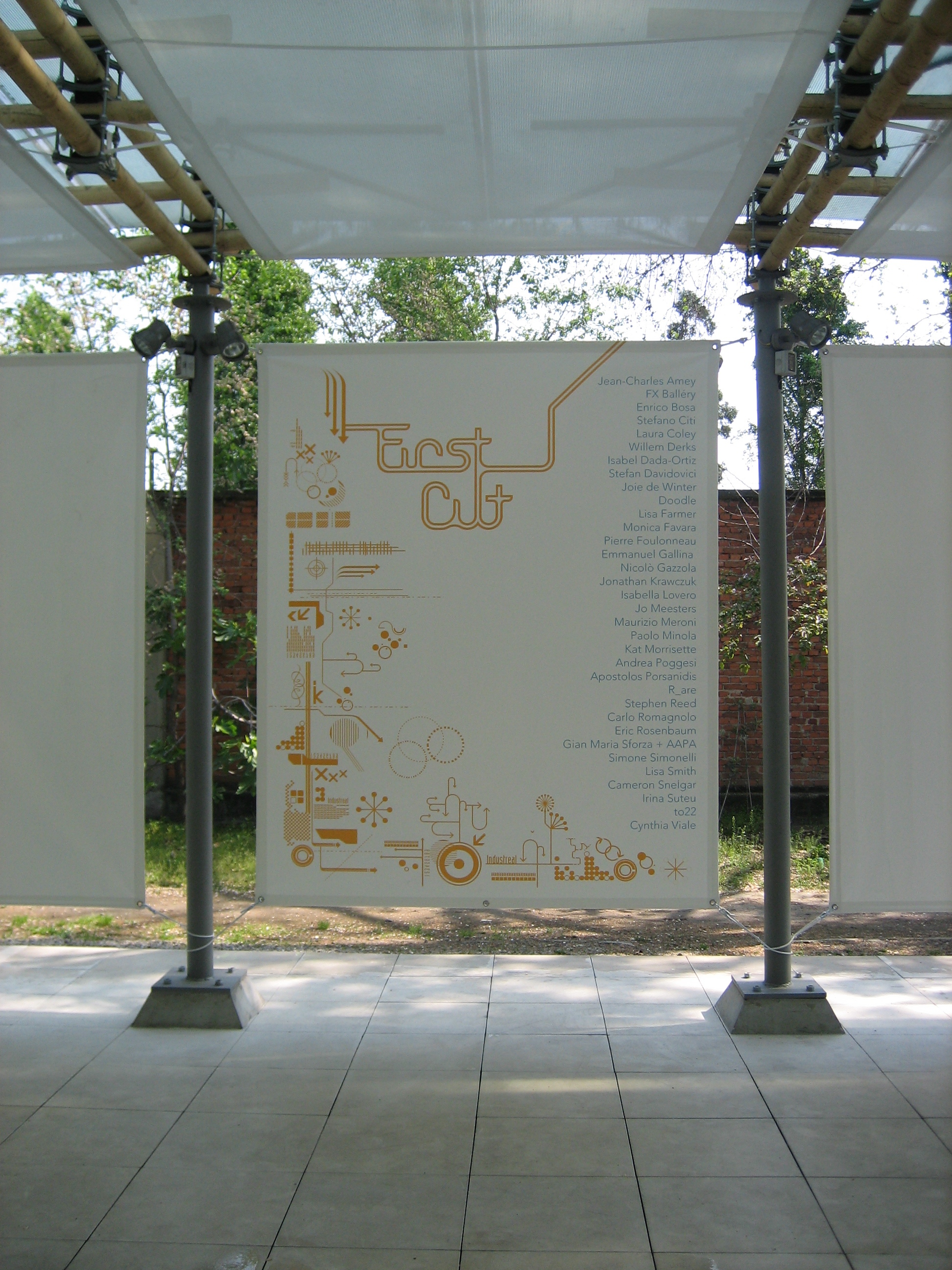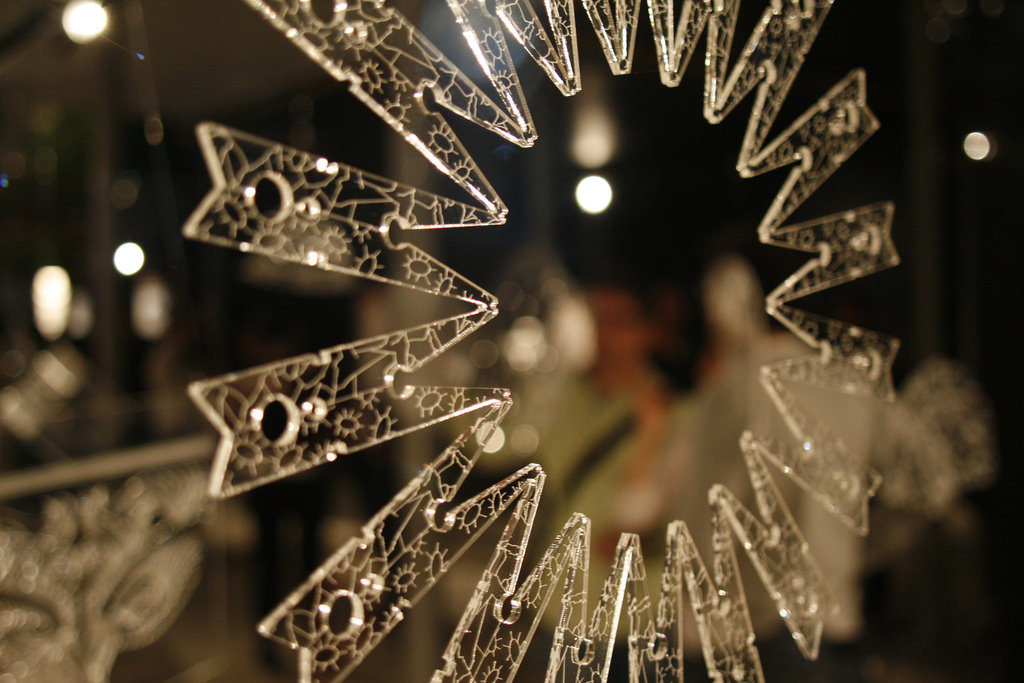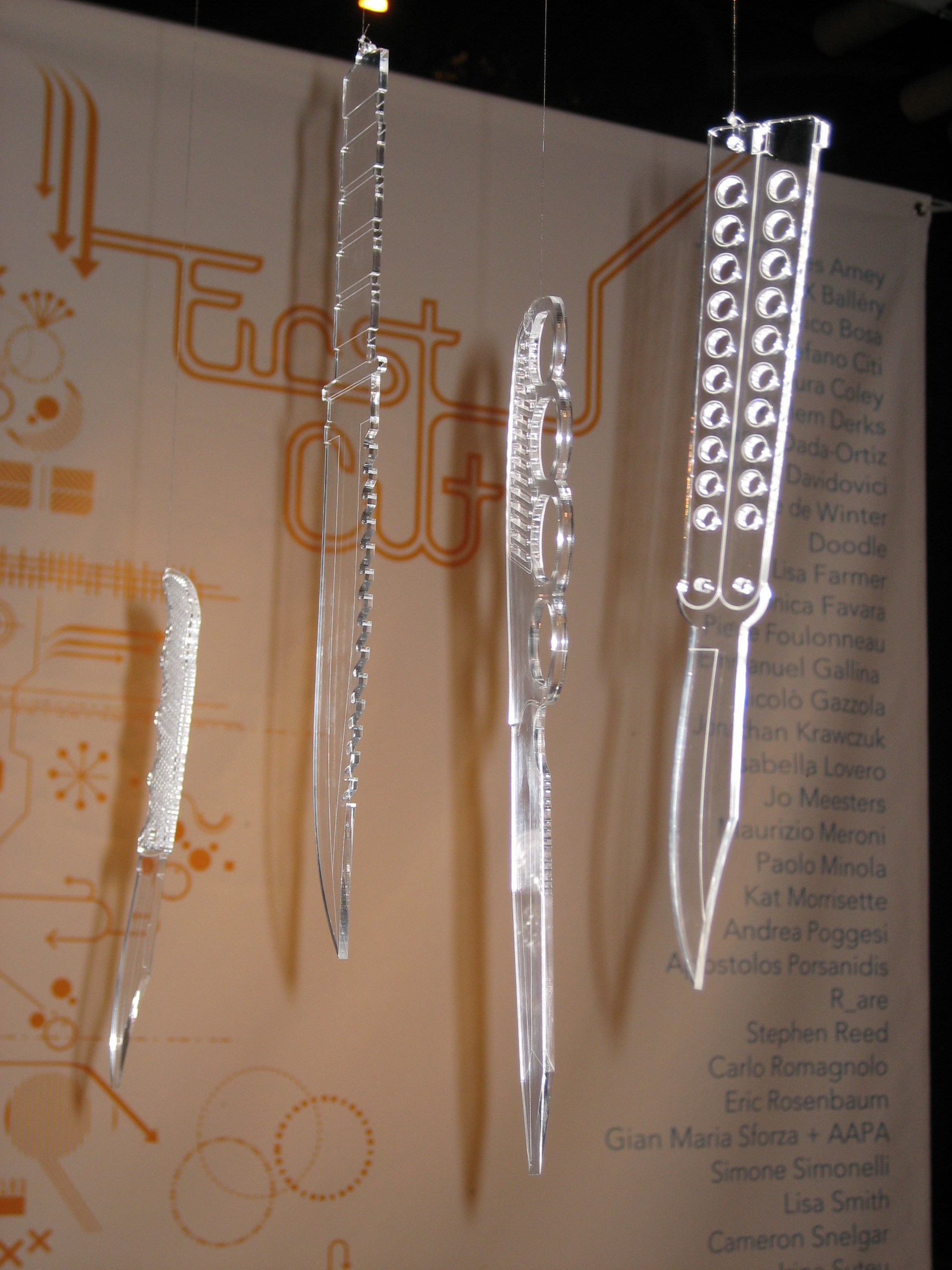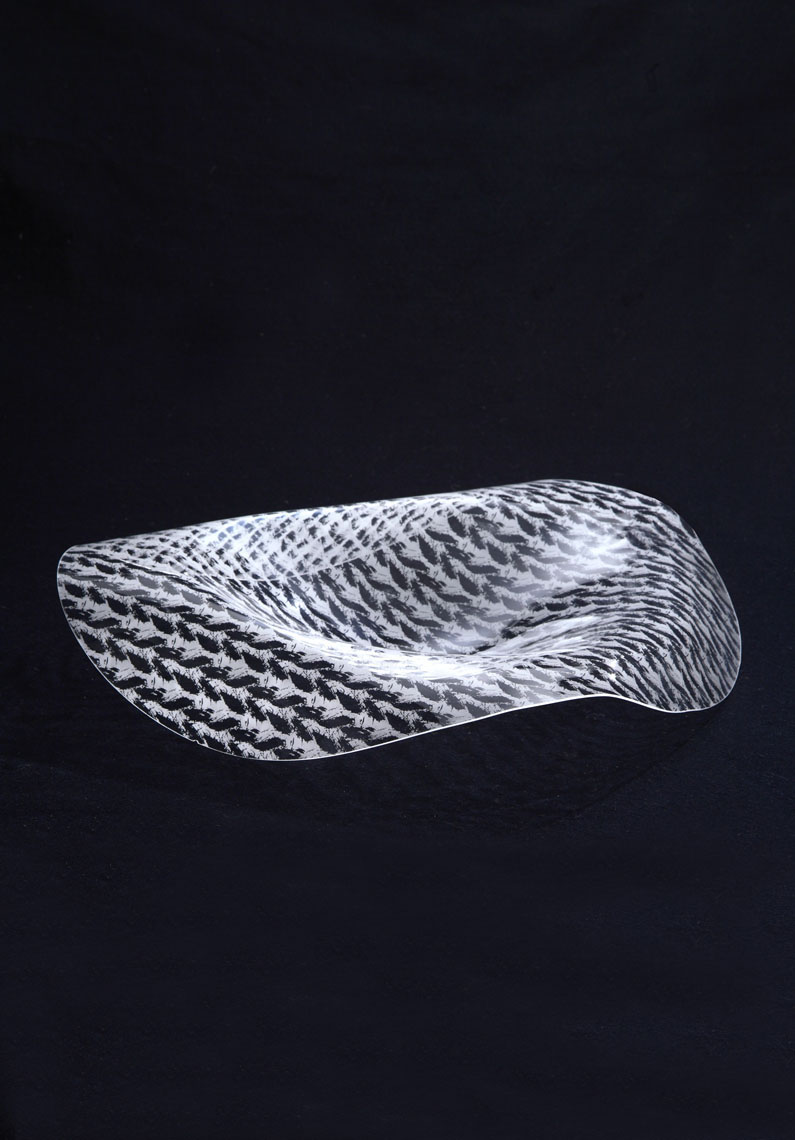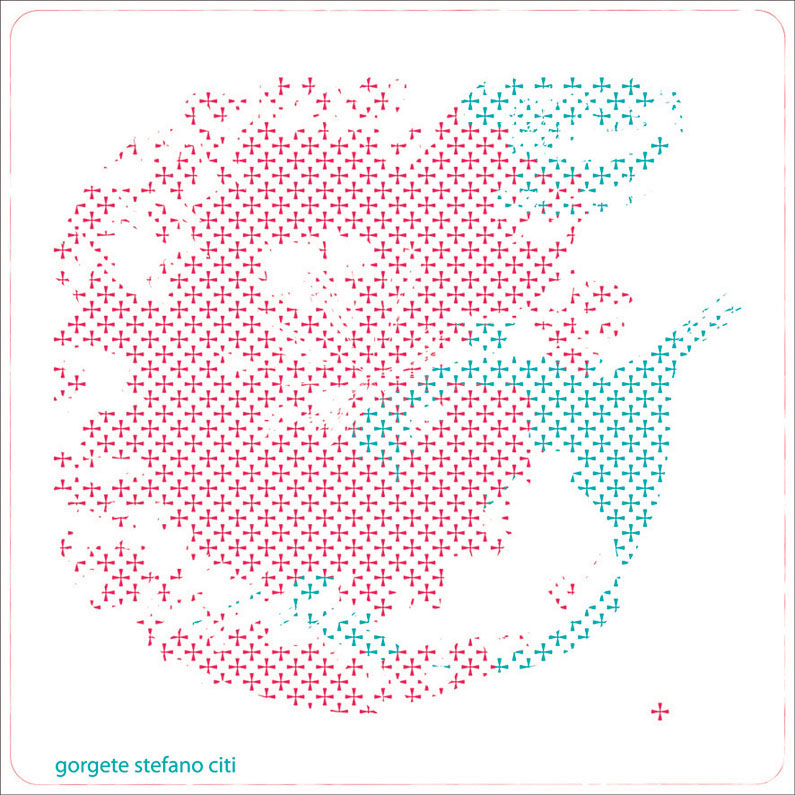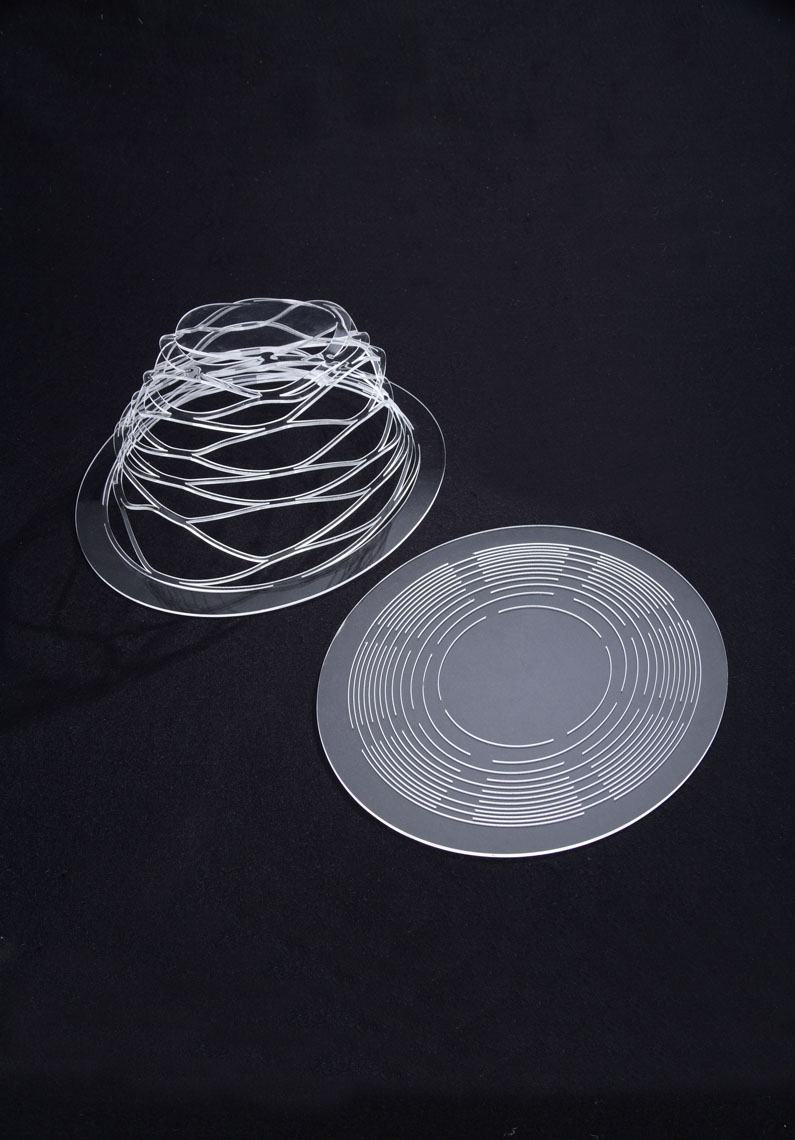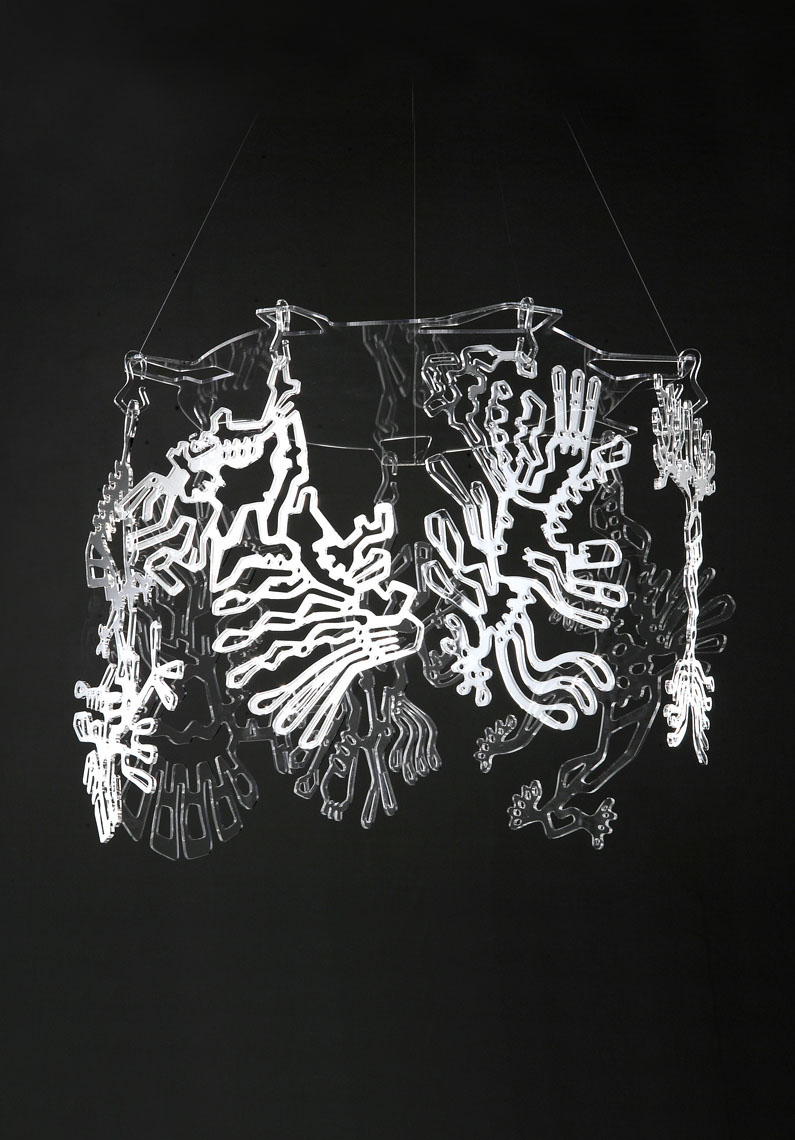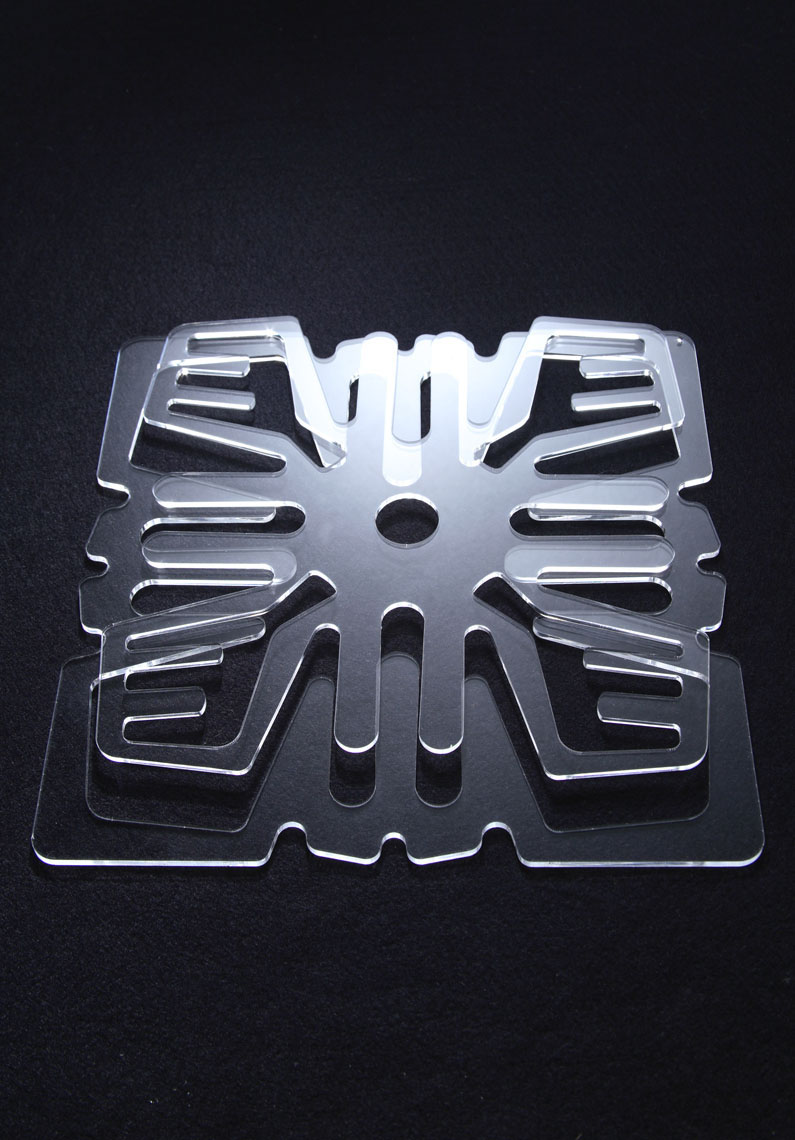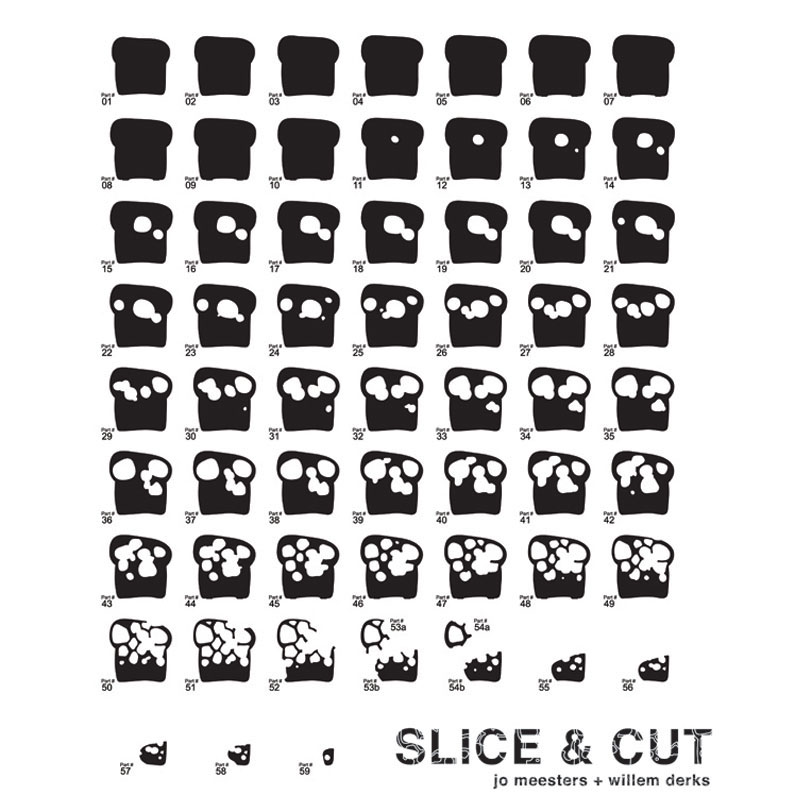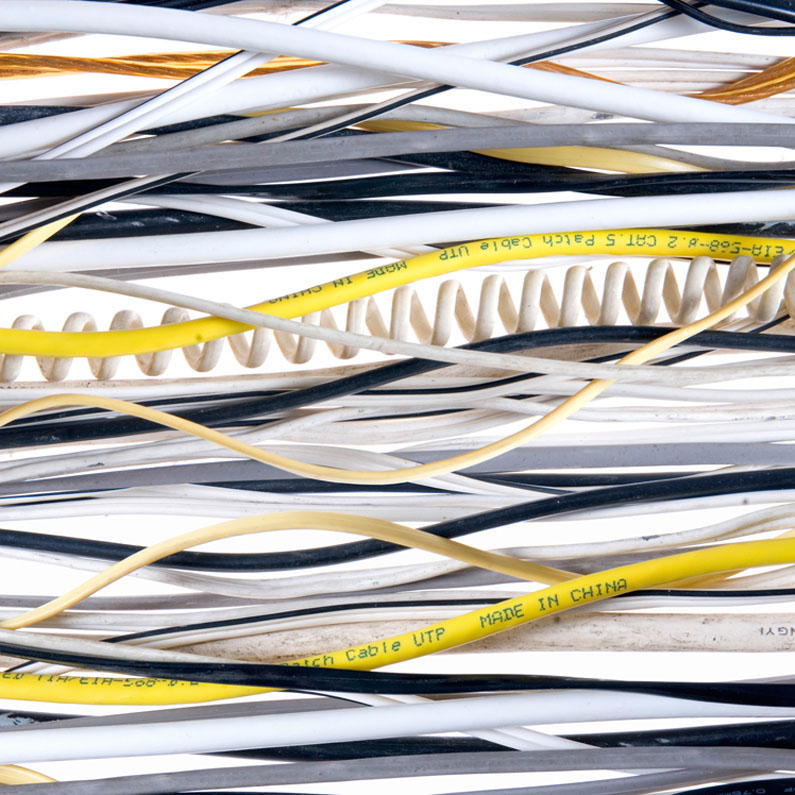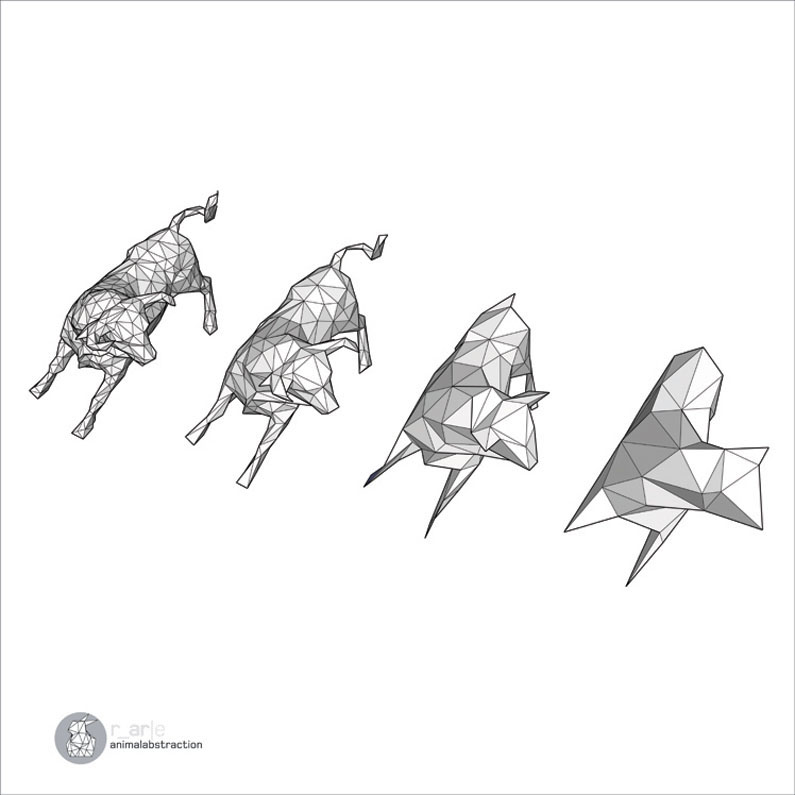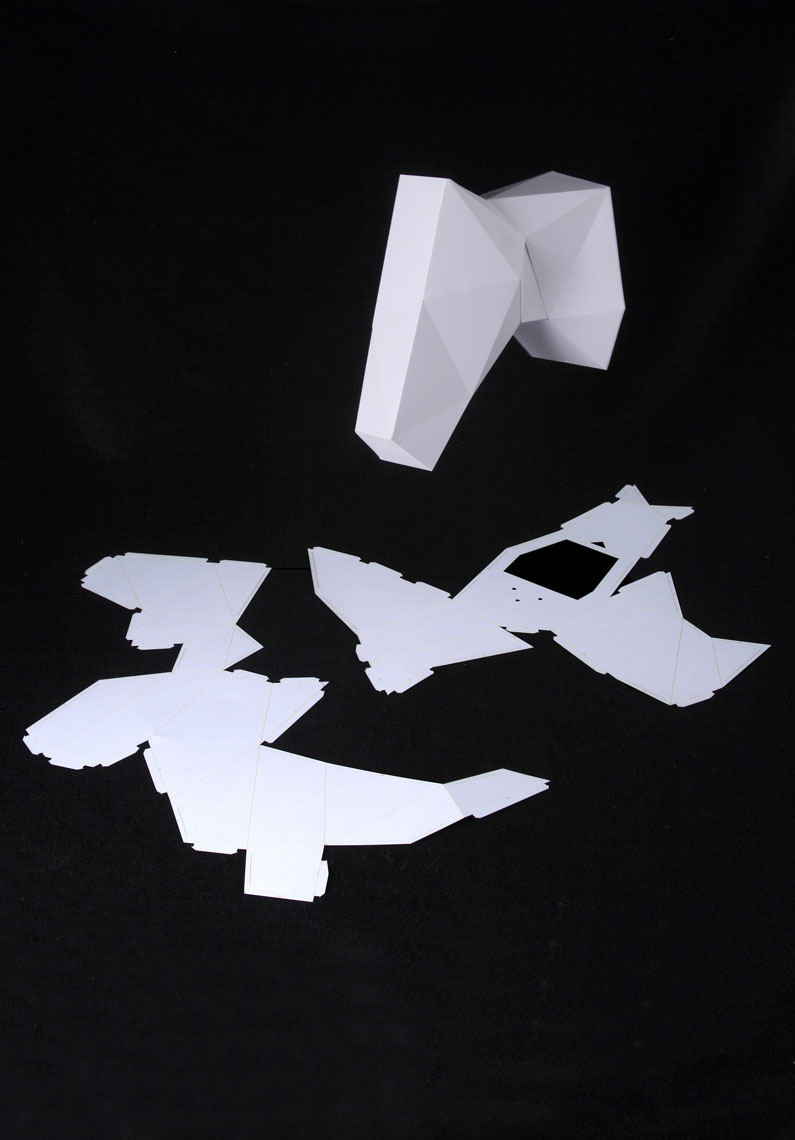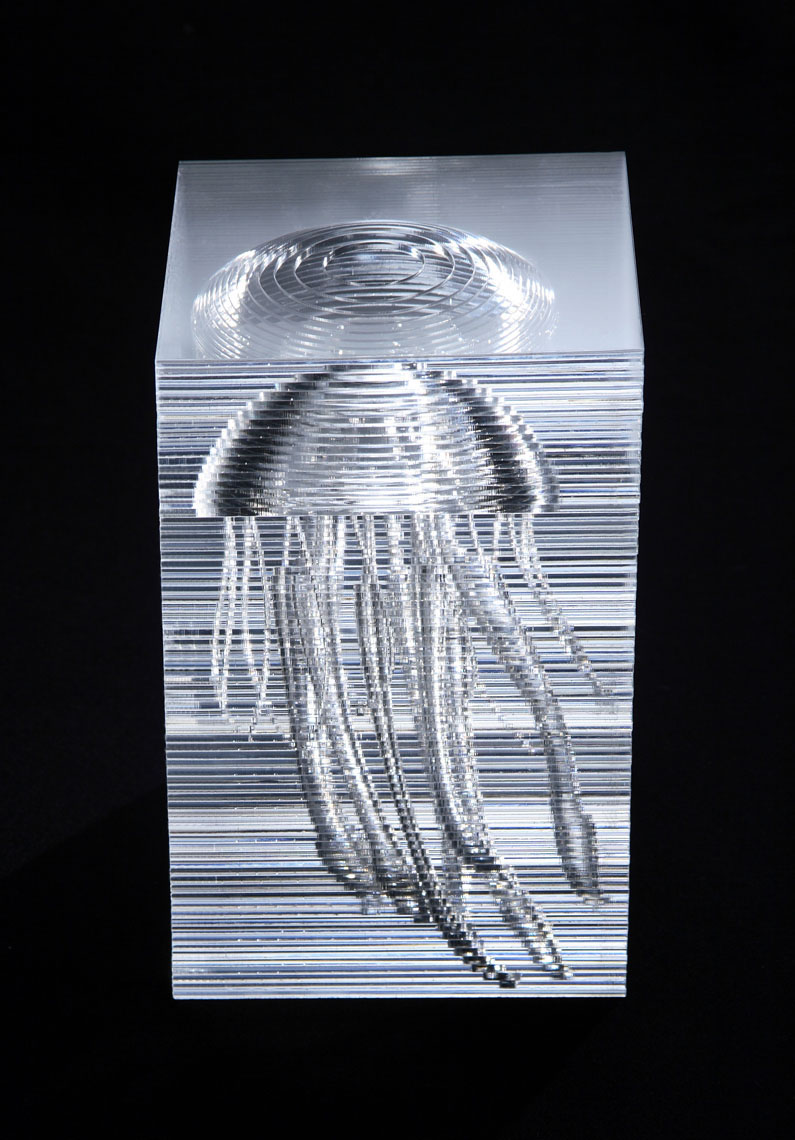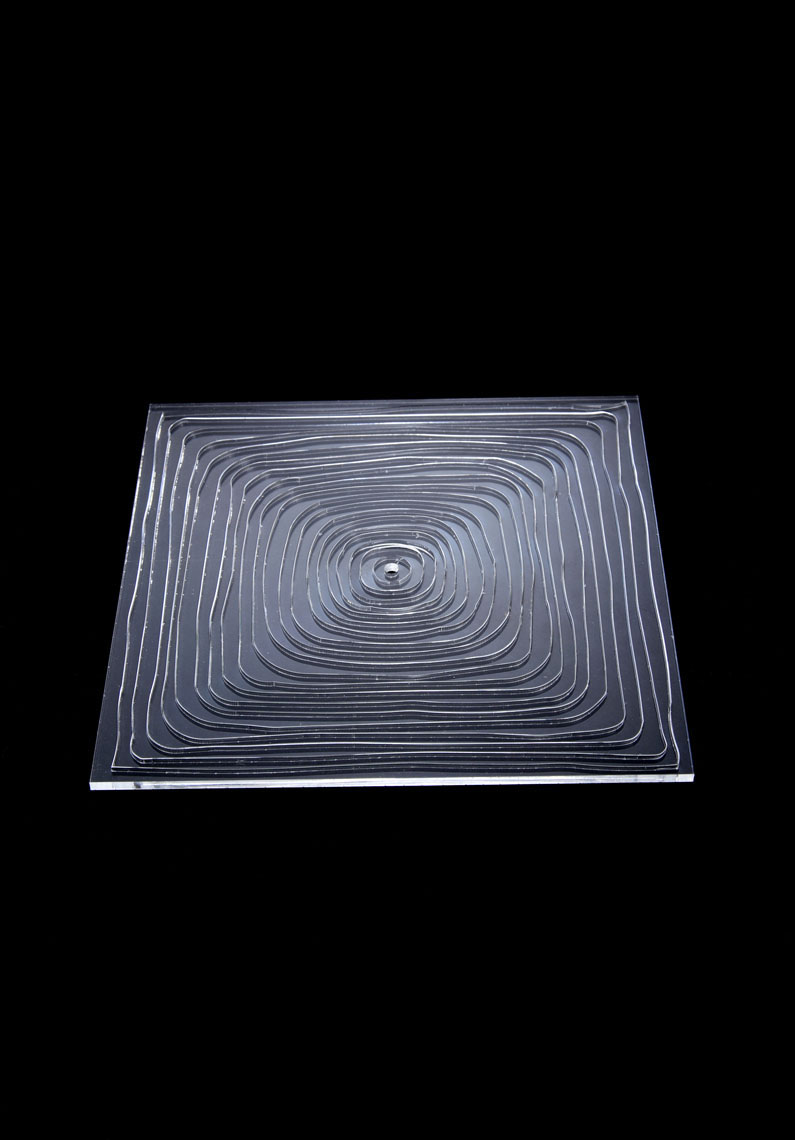first cut 2007
Cut, crop and trim in the world of design denotes the decisive movement that gives surfaces a shape (but often to emotions and intuitions too) through a precise and meticulous action in which cutting defines a border, an edge, thus creating the outlines of a shape.
The depth of a decision can be perceived in the first cut (the etymological origin of the verb to decide is cut off from de- ‘off’ + caedere ‘cut’), an action that changes the continuity of a surface, scratches the indifference of a flat material (be it canvass, wood, leather, paper, plastic or metal) and bends the two-dimensional stillness of a flat area into the ardour of three-dimensional space.
Thus the ups and downs that animate the material give shape to an idea, dressing an object and creating around an empty space a shell that defines content.
First Cut is the trace of an intention that chooses what to include and what to exclude from a project, generating a subjective interpretation, that measures and searches for a cut that fits the idea and thus creates it.
In this frame of mind the work of who implements the project reveals not only the cut, but the whole potential of adapting, emphasizing, making sense. A cut not only establishes a clear relationship between inside and outside, between what is included and excluded, but it also defines the line between before and after. That is why fashion is so entwined with time passing quickly because to cut also means to trace a temporal line between what is past and what is new.
Cutting, together with shaping, is one of the primordial phases of modelling. With cutting however, the flexibility of a material takes the place of malleability, the potential of each surface to bend in order to create a shape, or simply to adapt itself to a decorative criteria in which no part falls away like an off-cut, but on the contrary is kept intact enriching it with aesthetic meaning, symbols and dreams.
Cuts, grooves, etchings, embroidery and friezes together with holes, slots and incisions share a project vision that, starting from a surface, either encompasses it to create a shape that appears on the surface like calligraphy, or cuts out edges, hems, layers and flaps, in order to fold and assemble, sew or glue, solder or fix.
In other words, to give shape and encompass in the world of objects that three-dimensional dream that all surfaces have within. Like the cloth that wants to be fleece again, the table a tree, metal mineral and glass to become sand. To dress, clothe, cover, wrap and veneer belong to the creative dictionary of those that cut without ever hurting.
Having explored the expressive potential of rapid prototyping (In Dust We Trust 2004), having revisited the idea of models (Model Ideas 2005), having considered the expressive strength of a project dream (Dream 2006), this year Industreal has focused its research on the potential offered by laser-cutting, both in terms of precision and in terms of adaptability to ideas.
The designer now has a pair of powerful scissors with which to cut, engrave or simply draw on any kind of surface. Furthermore, to emphasize the immaterial content of the projects, the exhibition shows all the models realised in an easy, trasparent, ethereal material, similar to the stuff from which ideas are made, a material that plays with light and highlights those intagible concepts and emotions that all projects hold.
In Industreal language, First Cut denotes artist’s proof.
Giuliano Corti
ATELIER ONEOFF MILANO Italy
FIRST CUT COLLECTION
APRIL 18-22, 2007
CONCEPT having explored the expressive potential of rapid prototyping (In Dust We Trust 2004), having revisited the idea of models (Model Ideas 2005), having considered the expressive strength of a project dream (Dream 2006), this year Industreal has focused its research on the potential offered by laser-cutting, both in terms of precision and in terms of adaptability to ideas. The designer now has a pair of powerful scissors with which to cut, engrave or simply draw on any kind of surface.
TECHNOLOGY laser cut
MATERIAL transparent polymethylmethacrylate (PMMA)
DESIGNERS Jeancharles Amey, FX Balléry, Isabella Lovero & Enrico Bosa, Stefano Citi, Laura Coley & Jonathan Krawczuk, Isabel Dada-Ortiz, Joie De Winter & Stephen Reed, Atelier Doodle, Monica Favara & Andrea Poggesi, Lisa Farmer, Pierre Foulonneau, Emmanuel Gallina, Nicolò Gazzola, JoMeesters & Willem Derks, Maurizio Meroni, Paolo Minola, Kat Morrisette, Apostolos Porsanidis, Rare, Carlo Romagnolo, Eric Rosenbaum, Gian Maria Sforza & AAPA, Simone Simonelli, Lisa Smith, Cameron Snelgar, Irina Maria Suteu & Stefan Davidovici, To22, Cynthia Viale


